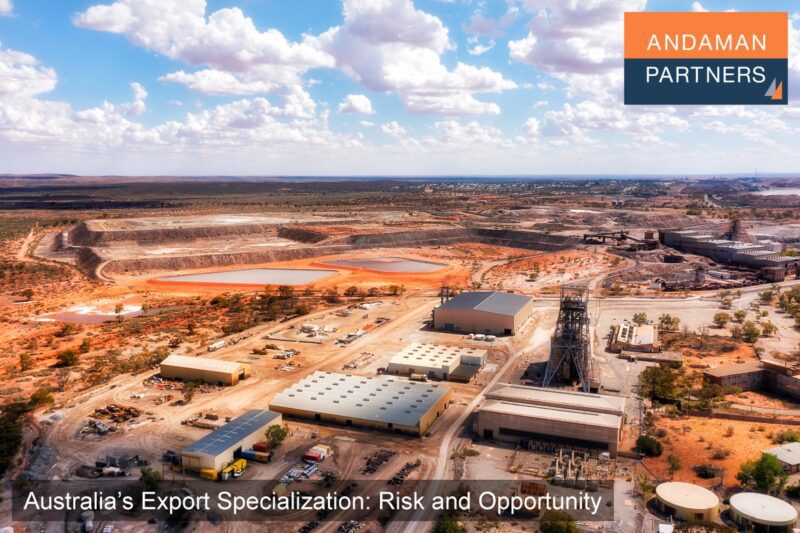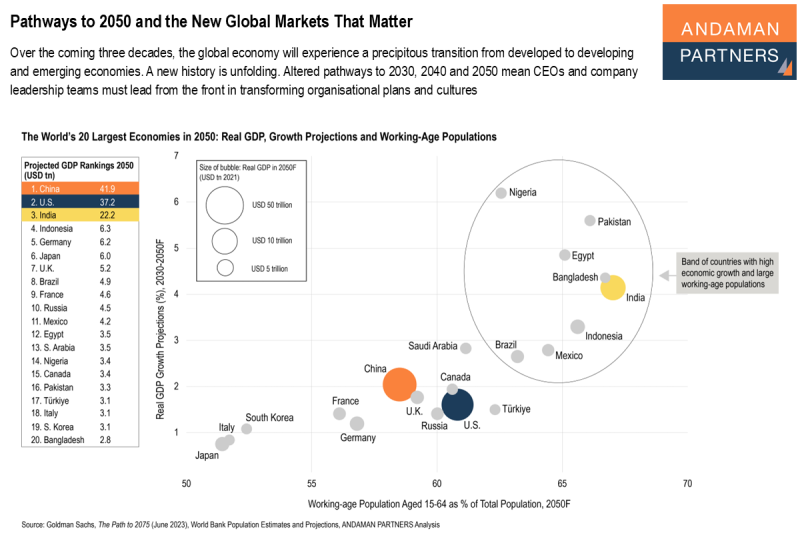Rapid and sustained economic growth driven primarily by domestic consumption has made the Philippines a Southeast Asian economic force to be reckoned with, with bright prospects to eventually become one of the world’s largest economies.
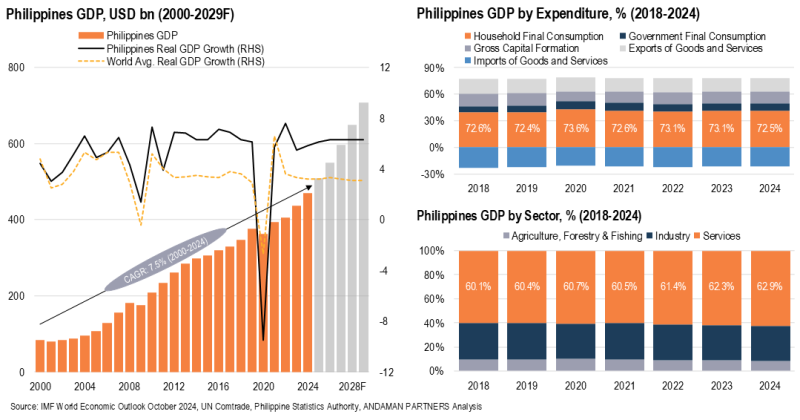
With a relatively large and young population of 114.9 million people, of whom 66% are of working age and 28.6% are aged 14 or younger (compared to 16.6% in China), the Philippines has bright economic prospects.
Since 2012, the Philippines’ real GDP growth has consistently exceeded 5%, except in 2020. In 2024, growth reached 5.8% and is projected to remain above 6% through 2029. The economy grew from just over USD 80 billion in 2000 to USD 470 billion in 2024, and is projected to reach USD 707 billion by 2029, placing it just outside the world’s 30 largest economies.
The rest of the century could be an impressive growth story for the Philippines. By 2075, GDP is projected to exceed USD 6 trillion, making it the world’s 15th-largest economy.
Although the Philippines has increased its exports from below USD 40 billion in 2000 to almost USD 80 billion in 2022, its GDP is not dependent on export-led growth, as the country generally maintains a trade deficit with imports exceeding exports. Instead, a large and growing population is the foundation of the country’s economy, as domestic consumption accounts for more than 70% of GDP.
Sector-wise, the country’s economy is based on a rapidly expanding services sector, which accounts for well over 60% of GDP, compared to less than 30% for industry and less than 10% for agriculture.
As a result, the Philippines has become a global leader in providing services for Business Process Outsourcing (BPO), a practice in which companies contract business operations to third-party service providers. Such services include call centres, human resources management, legal services, accounting and payroll, customer services and marketing. Other prominent service sectors in the Philippines are tourism, financial services, information technology, retail and trade.
The country’s large workforce, proficiency in English and cultural affinity with Western and Asian markets are key advantages of its growing services sector.
In short, the Philippines could be one of the most significant economic growth stories of the 21st century, and a country that foreign businesses must pay close attention to.
ANDAMAN PARTNERS supports international business ventures and growth. We help launch global initiatives and accelerate successful expansion across borders. If your business, operations or project requires cross-border support, contact connect@andamanpartners.com.

ANDAMAN PARTNERS is Hiring: Research Analyst (Brazil)
ANDAMAN PARTNERS is hiring a Research Analyst in Brazil (Full-time; Location Flexible/Virtual).

ANDAMAN PARTNERS Was a Co-Sponsor of the South African National Day Reception in Shanghai on 30 May 2025
ANDAMAN PARTNERS was a cosponsor of the South African National Day Reception in Shanghai on 30 May 2025.

Asia’s Shifting Role in Global Supply Chains — Perspectives by ANDAMAN PARTNERS Co-Founder Rachel Wu
Analysis by ANDAMAN PARTNERS Co-Founder Rachel Wu on changing patterns in global supply chains.
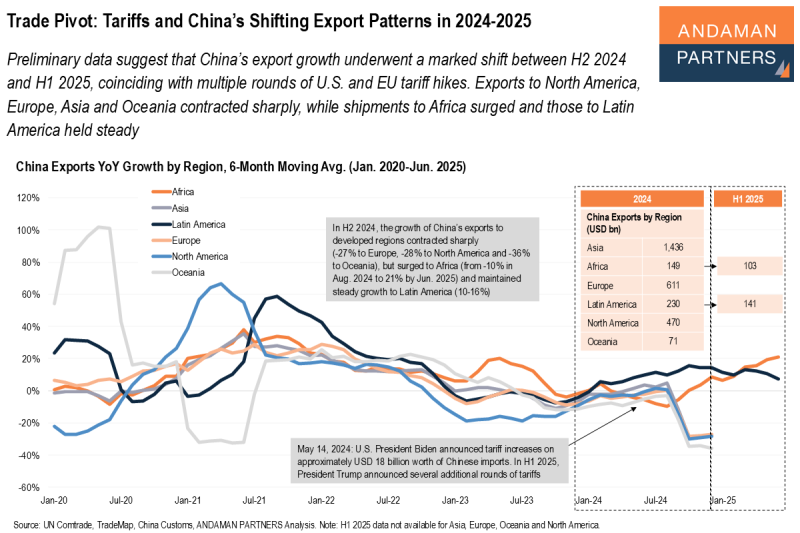
Trade Pivot: Tariffs and China’s Shifting Export Patterns in 2024-2025
Preliminary data suggest that China’s export growth underwent a marked shift between H2 2024 and H1 2025, coinciding with multiple rounds of U.S. and EU tariff hikes.
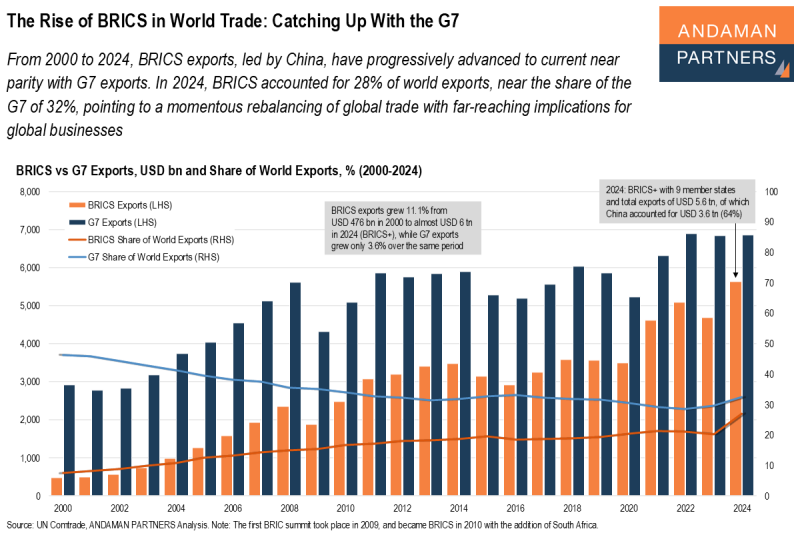
The Rise of BRICS in World Trade: Catching Up With the G7
BRICS exports have advanced to current near parity with G7 exports, pointing to a momentous rebalancing of global trade with far-reaching implications.
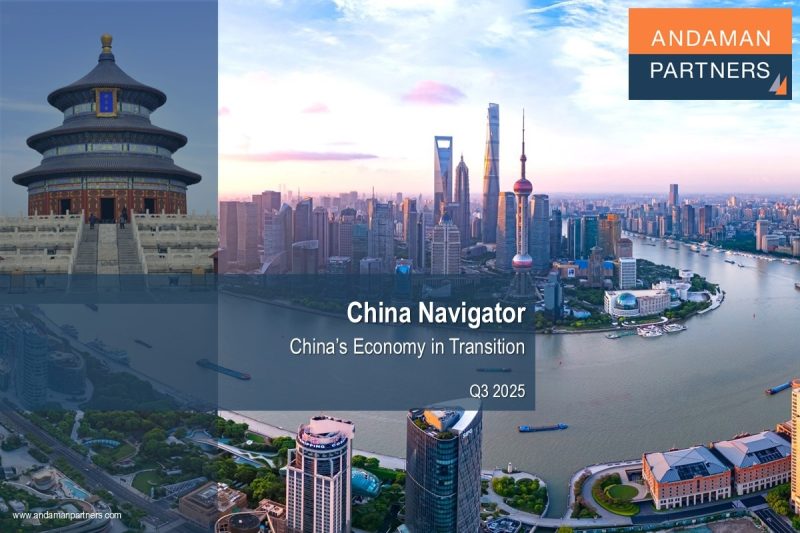
China Navigator – Q3 2025
ANDAMAN PARTNERS outlines, unpacks and unravels some of the broad shifts and finer intricacies of China’s economic development and transition in 2025.


